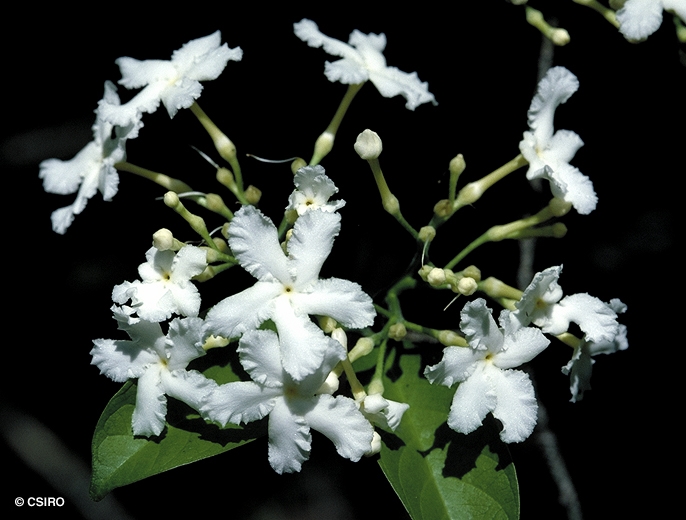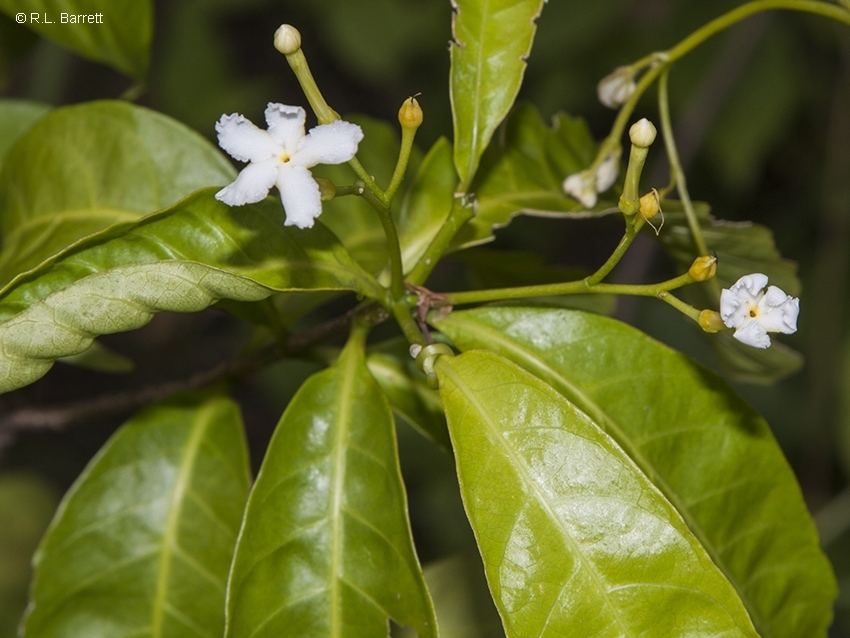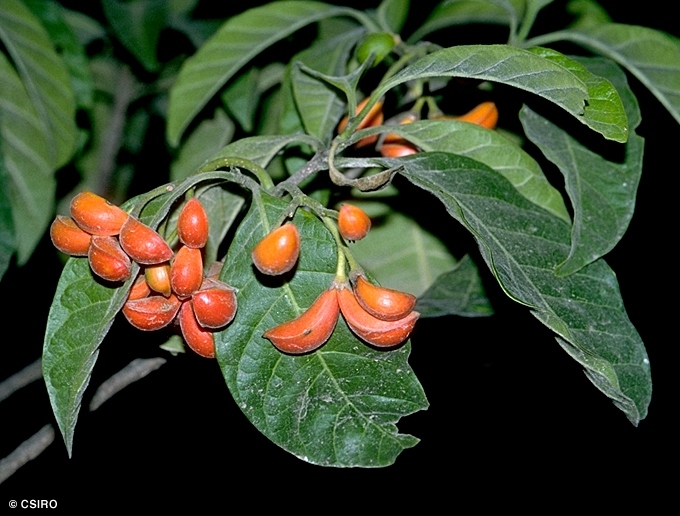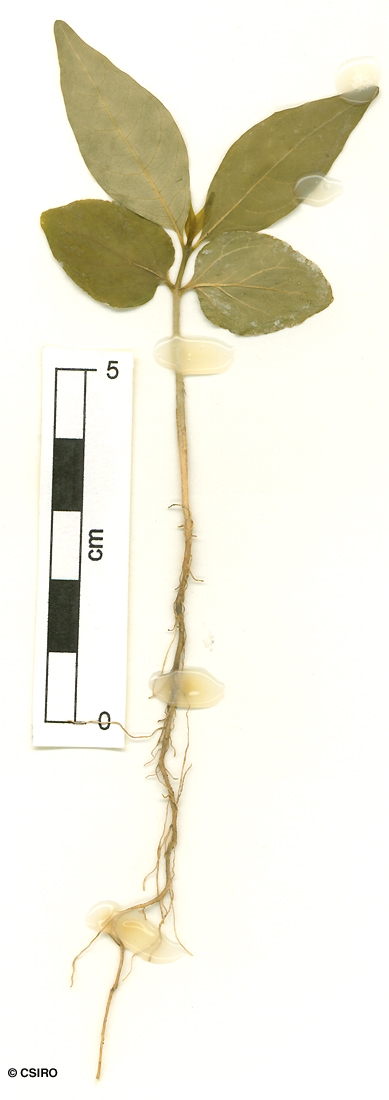Australian Tropical Rainforest Plants - Online edition
Tabernaemontana orientalis R.Br.








Brown, R. (1810) Prodromus Florae Novae Hollandiae : 468. Type: Lectotype: Australia. Sin. loc., 2.xi.1802, R.Brown [Iter Australiense 2858] (lecto: BM [photo at BRI!]; isolecto: K [photo at BRI!]).
Banana Bush; Rosebay
Usually grows into a small tree not exceeding 30 cm dbh but occasionally flowers and fruits as a shrub.
Twigs and petioles produce a milky exudate. Stipules small and inconspicuous, wedged between the petiole and the twig. Leaf blades about 7-10 x 3-5 cm, petioles about 0.5-1 cm long. Lateral veins about 8-15 on each side of the midrib, curving but not forming definite loops inside the blade margin. Both the upper and lower surfaces of the leaf blade hairy.
Flowers about 12-20 mm diam. Calyx lobes about 1 mm long clothed in erect hairs. Corolla tube about 12 mm long, lobes about 10 mm long, margins usually flounced. Stamens attached above the middle of the corolla tube.
Cotyledons ovate to elliptic, about 20-25 x 15-20 mm, apex obtuse, base cuneate. Elongated 'oil dots' visible with a lens. First pair of leaves ovate, about 3.5 x 1.5 cm, glabrous, margins smooth. At the tenth leaf stage: leaves elliptic, apex acuminate, base cuneate or attenuate; a short upright flange present in the leaf axil between the stem and petiole. Seed germination time 125 to 222 days.
Widespread in WA, NT, CYP, NEQ, CEQ and also in south-eastern Queensland. Altitudinal range from near sea level to 450 m. Grows in monsoon forest and drier rain forest. Also occurs in SE Asia, Malesia and the Pacific islands. Now regarded as a form of T. pandacaqui but maintained as a separate entity in this key.





